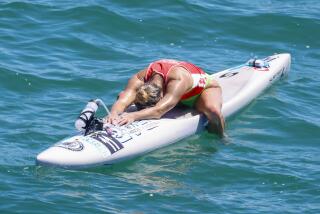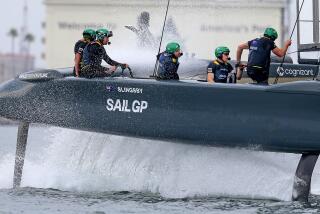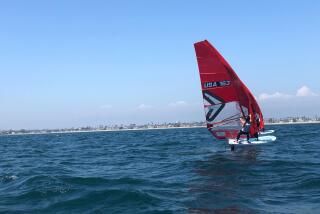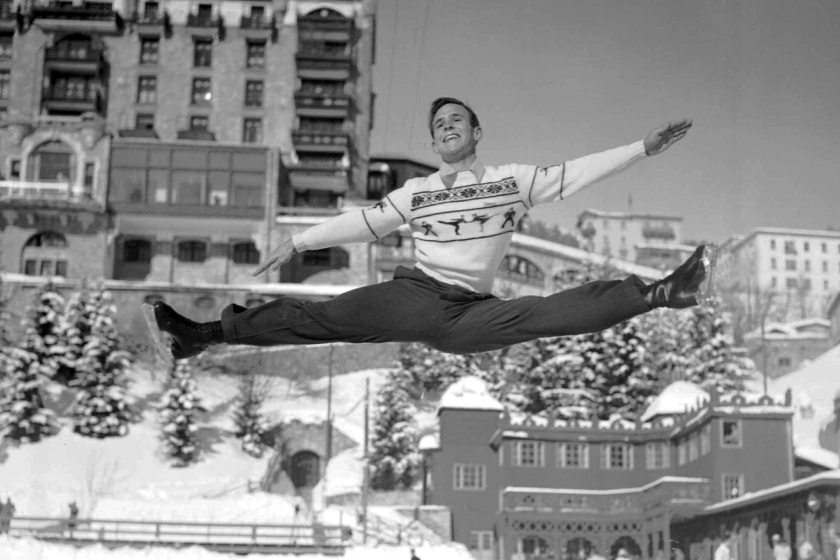Course Rules Buoy Interest of Cup Fans : Sailing: Spectators at sea allowed to get closer to and in the flow of traffic.
- Share via
SAN DIEGO — The welcome mat is out for America’s Cup, as long as spectators remember to mind their manners.
In the first week of racing, spectators sailors have been pleasantly surprised to find they can get relatively close, in some cases even be in portions of what race organizers call the “playing field.”
A small sampling of fans on yachts returning to the San Diego Yacht Club after Thursday’s race praised the setup and mentioned the support of Coast Guard boats acting as course monitors.
America’s Cup organizers say six months of planning after last spring’s world championships have produced what they feel is a workable viewing system that doesn’t compromise racers, migrating whales, naval defense and other safety aspects.
While the Coast Guard works with the America’s Cup Organizing Committee in overseeing course safety, the issue is largely in the ACOC’s court. Course marshal Robin Reighley works with about 100 volunteers--as well as anywhere from 15 to 30 Coast Guard personnel--daily to keep the courses clear for competitors.
Reighley, a retired Navy officer and a competitive sailor since the 1960s, said, “The Coast Guard asked that we do everything to enhance the safety aspect of the event. That helps to give the volunteers their raison d’etre . They are performing a useful function, and they get to be close to the action of the racers. Not many people can actually be on the racing boats, so this is one way to associate themselves.”
Once the courses were worked out, organizers drew up viewing limits as close as a half-mile of the course--considerably nearer the action than in 1987, when the course buffer was four miles wide and two miles deep.
Now, in the “batter’s box” portion of the course, where the racers circle for starting position, they may actually sail among spectators.
“By the world championship we had a little more confidence in the ability of the spectators,” he said. “Yesterday (racers) were into the spectating vessels. The spectators know enough to remain still.”
The 1988 Cup had some safety problems including a damaging crash between spectator boats on the last day, but Reighley said spectators seem to have learned better seamanship since.
In preparing for the 1992 Cup defense, the ACOC sent out a “Boating and Spectator Guide” to yacht clubs and sailing magazines, a pamphlet detailing the course lines and regulations.
Enforcement is a bit less stringent now, said Coast Guard Capt. J. Alan Doty, but he added they hope to send a message by the time the crowds swell for the final rounds--what organizers call “phase two.”
“It’s a real low-pressure situation right now,” Doty said, “but we (hope to condition) people to know where they should be or should not be. During the world championships we tried a lot of techniques that grew out of the ’87 and ’88 races here.”
When the races reach “frenetic interest” in April and May, Doty said, a 10-knot spectator speed limit will be enforced.
“We’re glad to have (spectators) use the water here,” he said. “The message we’ll tell them is ‘go slow.’ Most of the bad things we saw happen, happened because of speed. If we can keep the speed down we can have a very successful event.”
Along with speed and “spectator lines,” Reighley also hopes boaters will be aware of whales. This is the height of gray whale migration season.
“Our emphasis is: be prudent seamen while on the water,” Reighley said. “The race organization bears a larger (safety) responsibility than in the past. It’s a compromise between allowing spectators as close as we can without interfering with the competitors.”
More to Read
Go beyond the scoreboard
Get the latest on L.A.'s teams in the daily Sports Report newsletter.
You may occasionally receive promotional content from the Los Angeles Times.






